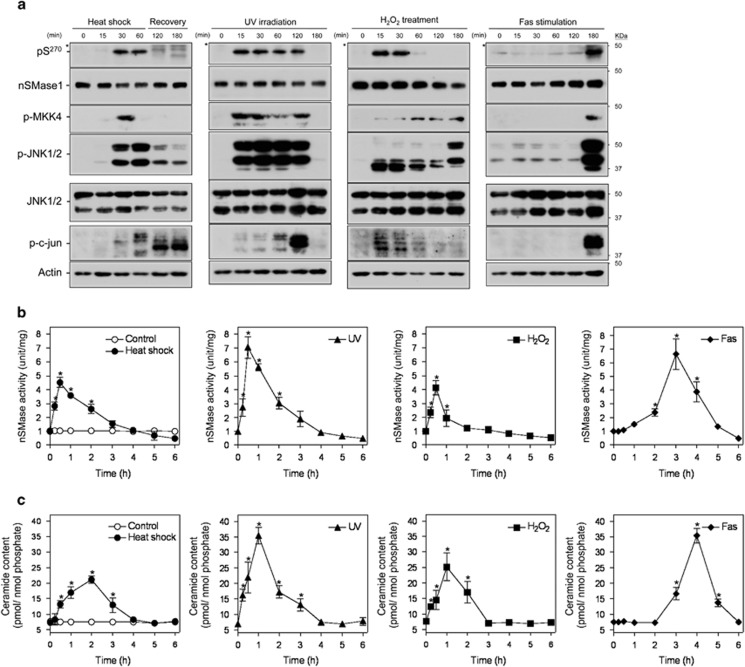Figure 5.
Stress-induced nSMase1 Ser-270 phosphorylation, nSMase activation, and ceramide generation in human Jurkat T cells. (a) The phosphorylation of Ser-270 nSMase1 was detected in Jurkat T cells. Cells were heat-shocked at 43 °C for 0, 15, 30, or 60 min and were then recovered at 37 °C for up to 2 h. For UV irradiation, the cells were irradiated by 254 nm UV at 5 mJ/cm2. For H2O2 treatments, cells were incubated in the presence of 1 mM H2O2. For Fas stimulation, cells were treated with 50 ng/ml of anti-Fas antibody and incubated at 37 °C for 0, 15, 30, 60, 120, or 180 min. The cell lysates were analyzed by western blotting with anti-phospho-Ser-270 nSMase1, anti-nSMase1, anti-phospho-MKK7, anti-phospho-MKK4, anti-phospho-JNK, anti-JNK, anti-phospho-c-Jun, or anti-actin antibodies, as indicated. Molecular weight markers are shown in kDa on the right. Asterisks indicate nonspecific signals. (b) The effect of heat shock, ultraviolet light (UV), hydrogen peroxide (H2O2), and anti-Fas antibody (Fas) on nSMase activity in Jurkat T cells. (c) The effect of heat shock, UV, H2O2, and Fas on ceramide generation in Jurkat T cells. Values represent the means of three independent experiments, and the error bars represent the S.D.s. *P<0.01 versus the control

